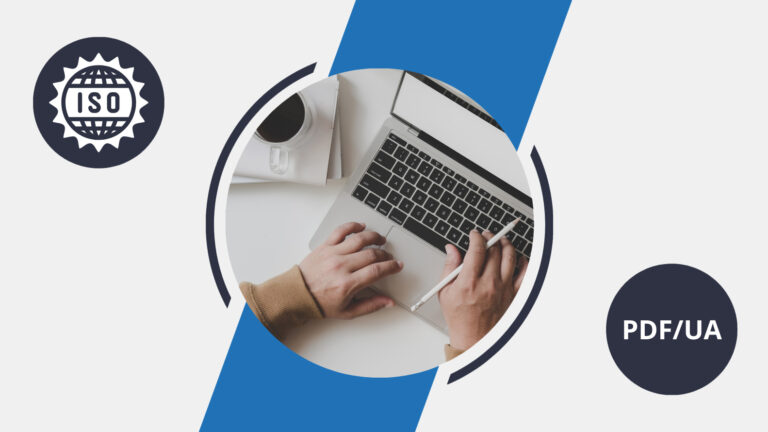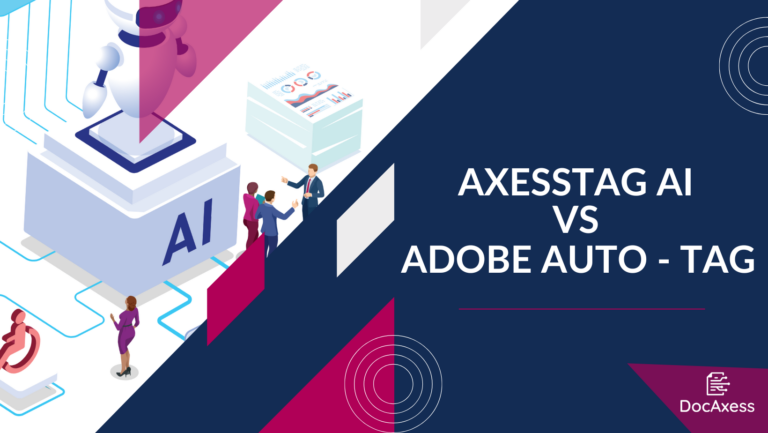Through this article, discover what the accessibility of a PDF document represents.
First, let’s recall what hides behind the term ‘PDF accessibility.’
A screen reader like JAWS cannot inherently read a PDF that is an image format.
To make this format usable through any screen reader, a process called background tagging of the document needs to be done.
In the background, meaning that the document made accessible will remain unchanged compared to the original document.
Identical but readable by a blind person, both with a screen reader and a Braille display.
However, tagging alone is not enough. PDF accessibility must be done according to international standards for the document to be considered accessible, in accordance with W3C guidelines.
The spirit of accessibility is thus respected, as the same document is readable by everyone.
A company wishing to make its publications accessible will further enhance its search engine optimization, broaden its audience, and align with an active Corporate Social Responsibility (CSR) policy.
The undeniable advantage of PDF accessibility compared to an alternative HTML solution, which is not a bad solution in itself, rests on two points:
- PDF is a secure format, unlike simple HTML.
- The user has the option, if desired, to download the document locally or onto a USB drive, for example, which is not possible with an HTML page.
Finally, let’s note that all publications on the internet are in PDF format, and it would be a shame not to make them accessible, especially since the current versions of Adobe Reader can easily read this type of document, provided that the tagging adheres to international standards.
Important note: A PDF scanned using any scanner is, of course, not taggable and therefore remains unusable by a screen reader.
The only way to read this type of document is to process it through an Optical Character Recognition (OCR) software, which makes the document usable by a JAWS user.
This solution can only be temporary and is by no means applicable to Corporate documents, given their complexity.
It is therefore not advisable to use scanned PDFs for a blind or visually impaired person.













